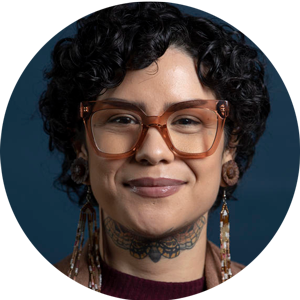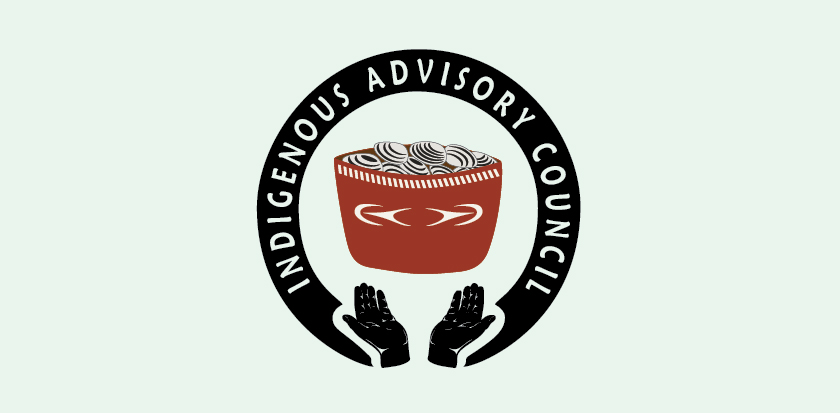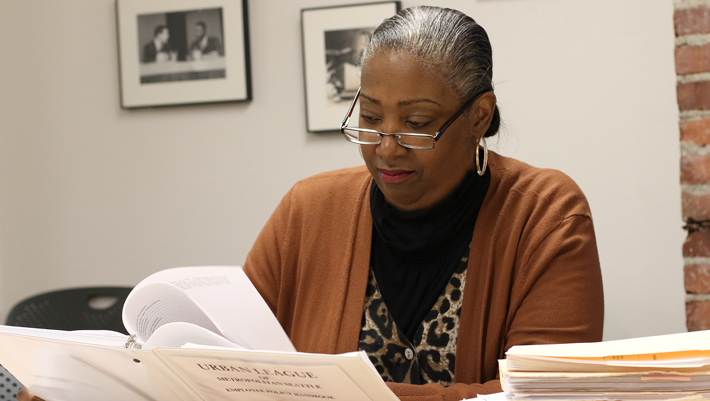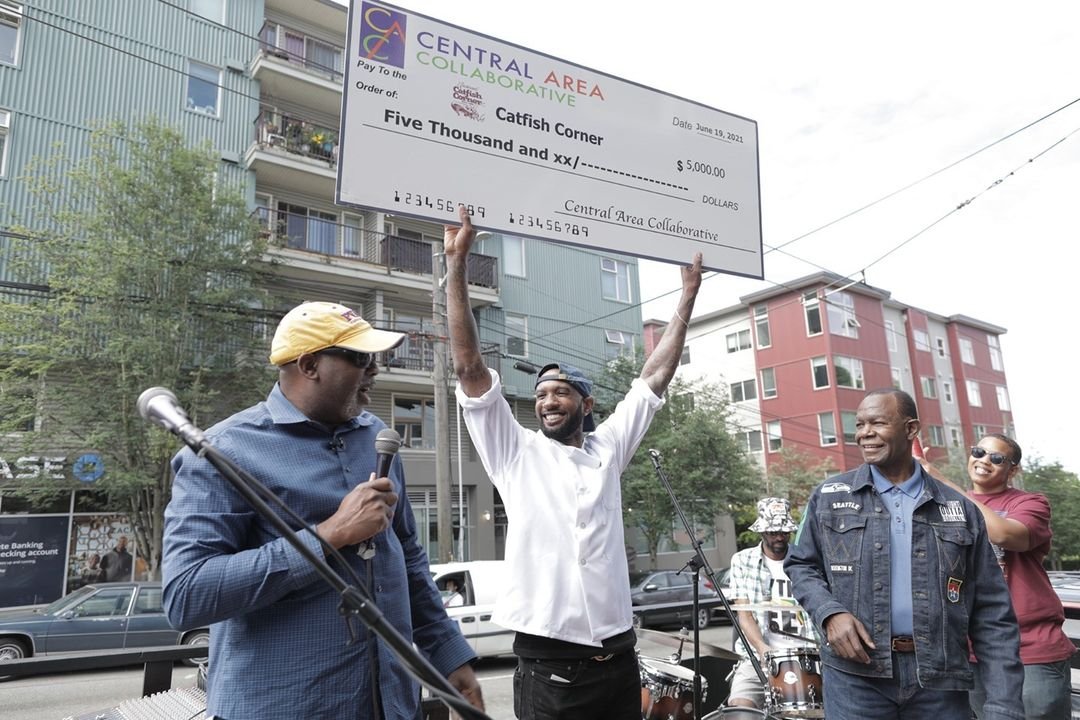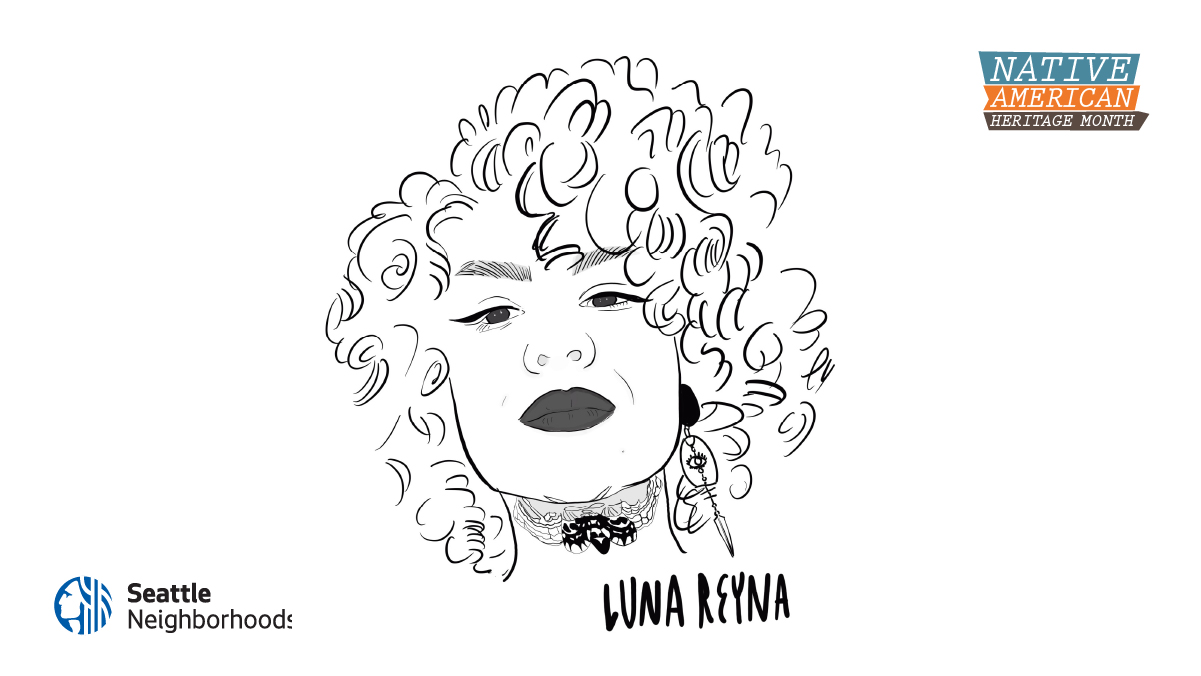
This piece was commissioned by the Seattle Department of Neighborhoods. The opinions expressed and information contained herein do not necessarily reflect the policies, plans, beliefs, conclusions, or ideas of the City of Seattle.
In celebration of Native American Heritage Month, we invited journalist, Luna Reyna, to curate a series of stories to amplify and honor the people and experiences of Seattle’s Native American community.
by Luna Reyna
Indigenous people telling our own stories is healing for past, present, and future generations—of both Native and non-Natives. Expressing the conditions of an unjust society and facilitating healing is vital for true liberation, not just Native liberation, but for all people impacted by systems of white supremacy. Our stories are a reckoning, and through the growth of Native media and ability for individual Native storytellers to share their lived experiences and the stories of their ancestors through social media, the rest of the world has begun to hear, recognize, and even rally behind the words, “Land Back.”
The United States of America is a settler colonial state which embraced erasing the people who inhabited the pre-colonized land through violent resource extraction, environmental desecration, displacement, and genocide. The U.S. accomplished this in-part through widespread dehumanization. Indigenous people have been called wolves, animals, and savages while white settlers were told the “New World” was a Promised Land and settling it was their divine right according to Manifest Destiny. This dehumanization resulted in 56 million Indigenous people being murdered by the U.S. government and settlers in the first 100 years of colonization.
This has been followed by denial and a rewriting of history—but the tide has been turning as people gain access to information they didn’t have before. “Land Back” has begun to inspire people to dream of a truly anticolonial, unapologetically Native vision for the future. Each perspective has awakened personal and collective movements for liberation.
For some, the Land Back movement has been expressed through representation in city art. Art is culture. We dress ourselves in art. It’s healing and can often be a way through which Indigenous people express cultural and spiritual beliefs. So, when non-Native people come to a city and are exposed to Native art, it signals that they are on Native land, which facilitates a deeper understanding and respect for the first people and the land. Decolonizing the land through the arts is powerful.
Land back through cultural preservation and revitalization is another liberatory way the Land Back movement has been interpreted. An example of this is growing traditional foods, medicinal plants, and plants used in ceremony, as a means of reclamation and reconnection to the Land, emphasizing the importance of traditional ecological knowledge and maintaining that knowledge for future generations.
And of course, Land Back is a literal reclamation of stolen land to its original stewards. We see this through Native nations purchasing and reacquiring their traditional homelands, when local governments work with Native nations to return county-owned parcels of land and public-right-of-way land within reservation boundaries back to their original stewards, and even in rare cases, non-Native folks have offered to deed their land to Native nations when they pass on.
For others, who see Land as something to be possessed, the words “Land Back” together instill fear or anxiety. Fear that the Indigenous people who were violently dispossessed from our homelands would enact that same violence on those who currently occupy that land. Anxiety that the land they believe they possess will be ripped from them.
The reality is the Land Back movement has never been about violent retribution for the cruelty our ancestors endured. It’s a healing movement for the land and Indigenous people who are one. But it has transformed into something more.
At this moment in time we can’t talk about Land Back without talking about Palestine. Indigenous people from all over Turtle Island and abroad are sharing, “Land Back also includes Free Palestine.” Indigenous customs, traditions and tribal identities are complex and unique but one thing many acknowledge is the correlation of a violent settler colonial state displacing Native Palestinians from their homelands to the history of the violent settler colonialism in the Americas that resulted in the genocide of so many and the scattered reservations some Indigenous nations have been alotted today.
Israel is a settler colonial state that has embraced erasing the people who inhabited the pre-colonized land through violent resource extraction, environmental desecration, displacement and genocide. Israel has accomplished this through widespread dehumanization. Palestinians have been called “human beasts” and “children of darkness” who live by the “laws of the jungle,” while settlers are told they have the “right” to the land based on the Book of Genesis, resulting in at least 120,286 Palestinian people being murdered by the Israeli government and settlers in just the last 15 years.
It’s important that we acknowledge the throughline of settler colonialism globally and the impact that continues to have on the Land that each of our nations stewarded since time immemorial.
Being in solidarity with Palestinians who want to remain in their homelands does not equate to condoning the actions of Hamas or any violence. Context is also important. Hamas was created after decades of violence by the occupying Israeli government. The cruelty, violence and bloodshed of Palestinian people by the Israeli government has been unconscionable for over 75 years. It’s this occupation, the tactics of a colonial military backed by world powers, and now the ongoing genocide of Palestinian people in Gaza, that many Native people connect with. There is a direct correlation with the tactics used by the occupying Israeli government and the U.S. government to the Indigenous people of what is now the United States.
And this solidarity in the movement for Land Back liberation between Native people on Turtle Island and Native Palestinians isn’t new. It can be seen in the 70s between the Native American Movement and the Palestine Liberation Organization (PLO) and we have seen Natives wearing Palestinian keffiyehs in solidarity with Palestinians whilst protesting pipelines here in the U.S. over the years.
Now, Land Back has begun to transform into a phrase used in solidarity with all people impacted by settler colonialism — a call for sovereignty and liberation of all occupied land and oppressed people across the globe, in our lifetime.
For this series, Rena Priest, an enrolled member of the Lummi Nation, and poet and author shares her perspective on Land Back through poetry and her nation’s fight for fishing rights and preservation of their traditional homelands. Christopher Rachal is a Two-Spirit member of the Natchitoches Tribe with roots to the Caddo, Chitimacha, Creek, Celt, Congo, Guinea and Eʋe people, shares his own poetic vision for Land Back through Reparations and Land Rematriation, and Howie Echo-Hawk, a Pawnee, queer, trans comedian, musician, DJ, writer, event producer, and visual artist, shares their perspective on Land Back through what’s been called, “punish comedy.” Echo-Hawk plays on white America’s worst fears in a comedy skit you won’t soon forget.
